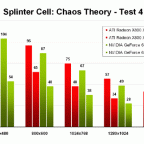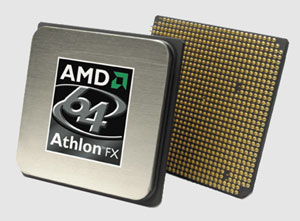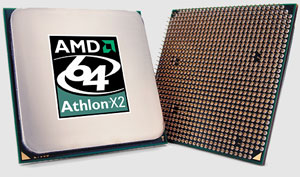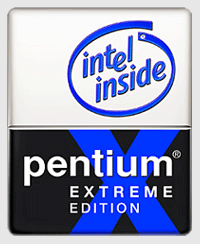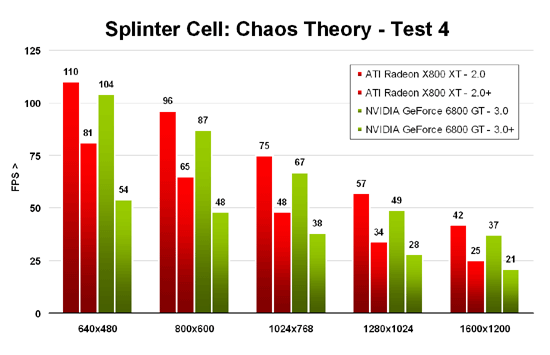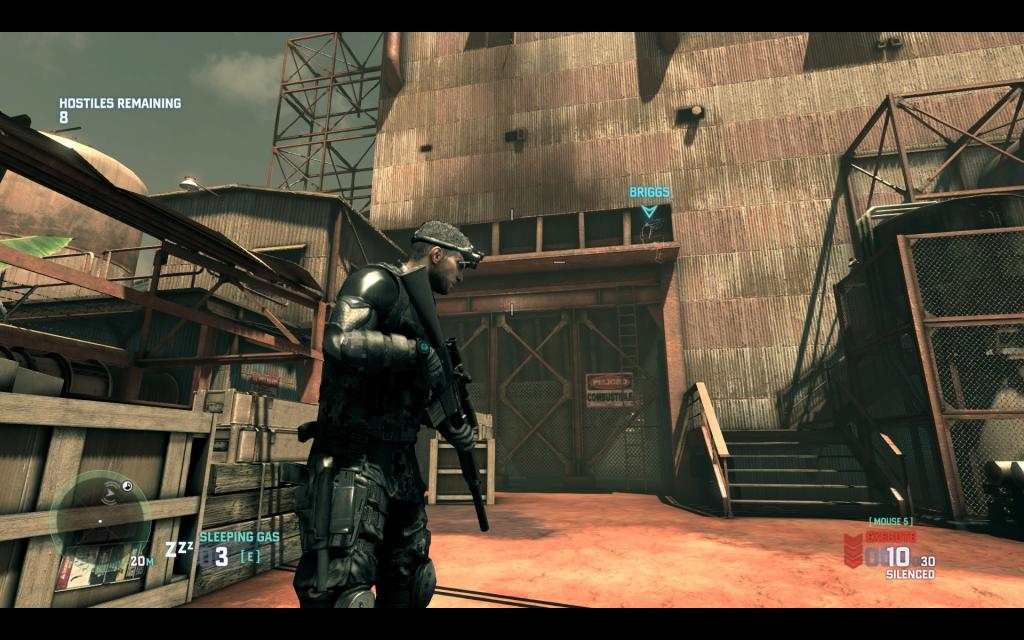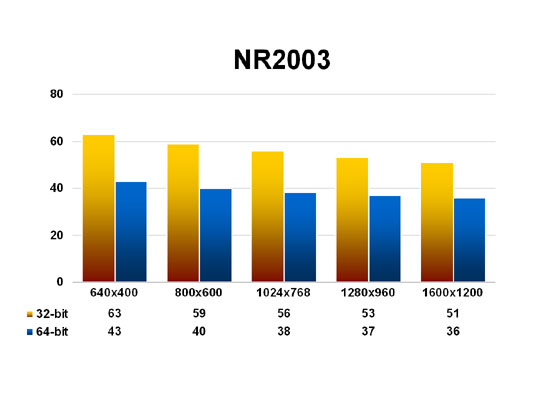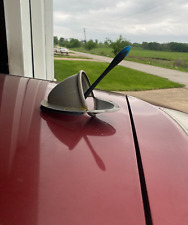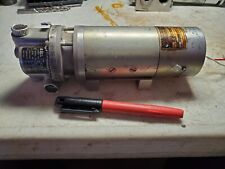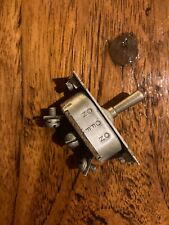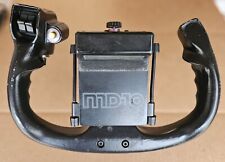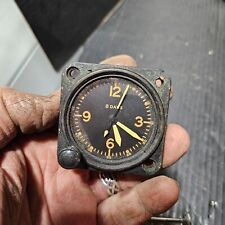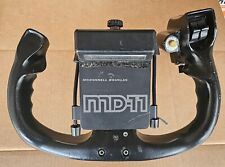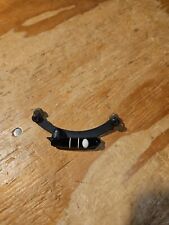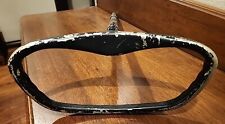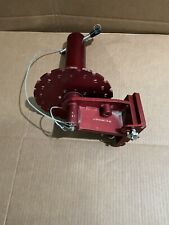by John Reynolds
Introduction
 When Ubisoft released the newest title in their Splinter Cell series of stealth-action games earlier this year, there was a certain amount of controversy surrounding the visual effects the game supported. Or, perhaps more aptly put, the controversy was based on the fact that Chaos Theory shipped with no support for Shader Model 2.0, largely viewed by the online graphics community as an inflection point for games coded to support DX9-level technology since it is supported by both ATI and NVIDIA hardware, whereas only the latter’s chips currently support SM3.0. The shader profiles found in the shipping game supported SM1.1 and SM3.0, which left those owning graphics boards based on ATI chips limited to the 1.1 profile and its lack of additional features, such as parallax mapping and high quality soft shadows. These visual effects were considered to be artificially, and unfairly, limited to the SM3.0 profile, and various message boards hummed with conspiracy theories and rumors as to why Chaos Theory shipped in such a state. Yet now with the recently released 1.04 patch for the game, an additional shader profile for SM2.0 support has been added to the game, available only for ATI hardware, and this article will detail the shader profile performance differences using an ATI Radeon X800 XT and a NVIDIA GeForce 6800 GT graphics boards. Before digging into the benchmark results, however, a brief overview of the shader profiles and features supported in Chaos Theory would be appropriate.
When Ubisoft released the newest title in their Splinter Cell series of stealth-action games earlier this year, there was a certain amount of controversy surrounding the visual effects the game supported. Or, perhaps more aptly put, the controversy was based on the fact that Chaos Theory shipped with no support for Shader Model 2.0, largely viewed by the online graphics community as an inflection point for games coded to support DX9-level technology since it is supported by both ATI and NVIDIA hardware, whereas only the latter’s chips currently support SM3.0. The shader profiles found in the shipping game supported SM1.1 and SM3.0, which left those owning graphics boards based on ATI chips limited to the 1.1 profile and its lack of additional features, such as parallax mapping and high quality soft shadows. These visual effects were considered to be artificially, and unfairly, limited to the SM3.0 profile, and various message boards hummed with conspiracy theories and rumors as to why Chaos Theory shipped in such a state. Yet now with the recently released 1.04 patch for the game, an additional shader profile for SM2.0 support has been added to the game, available only for ATI hardware, and this article will detail the shader profile performance differences using an ATI Radeon X800 XT and a NVIDIA GeForce 6800 GT graphics boards. Before digging into the benchmark results, however, a brief overview of the shader profiles and features supported in Chaos Theory would be appropriate.
Ubisoft has built the Splinter Cell games over the last few years using various versions of the Unreal Engine from Epic, though with additional graphics features added by the developer to take advantage of more advanced graphics cards. The 1.1 profile is obviously named after SM1.1, which was included in DX8 years ago and gives the game compatibility with both the large installed base of DX8 hardware found in the form of discrete graphics cards on the market and with Microsoft’s Xbox console. This particular profile, however, lacked some of the options that the 3.0-and now also 2.0-profile has for the following features:
- high dynamic range (HDR) rendering – when enabled with NVIDIA hardware that supports HDR (such as the 6800 and 7800 product lines), this feature forces a higher level of precision throughout the entire pipeline of the hardware, with FP (floating point) render targets and FP blending and filtering being used. When enabled with the ATI-specific 2.0 profile, we’re not entirely sure what exactly HDR is performing since no ATI hardware currently available supports FP blending. And enabling HDR in either the 2.0 or 3.0 shader profile disables all anti-aliasing support.
- tone mapping – HDR results in color values beyond the range of what can be produced by current display devices (LCD or CRT), and this feature is a means by which to recalculate those values so that they fall within a reproducible range.
- parallax mapping – also known as offset mapping, this effect is akin to bump mapping in that it gives a better 3D appearance to a flat surface by adjusting texture coordinates relative to each other based on the angle of the player’s view.
- high quality soft shadows – this option results in a filtering of the edges of shadow maps to give shadows a softer, more natural appearance.
While the two original profiles result in essentially the same rendered output when the above additional features are not enabled, there are some minor differences between them, such as banding and/or blockiness in the specular lighting with shader profile 1.1 that’s very readily noticeable on certain levels (such as the bank mission) and regardless of the hardware installed (ATI or NVIDIA). Fortunately for ATI card owners, this has now been fixed in the new 2.0 profile.
Test Systems Setup
- ASUS A8N SLI Deluxe (nForce4 chipset) motherboard
- 1 GB (2x512MB) Corsair DDR400 memory
- AMD Athlon 64 FX-55 processor
- ATI Radeon X800 XT graphics card (Catalyst 5.7)
- NVIDIA GeForce 6800 GT graphics card (ForceWare 77.72)
The latest BIOS and chipset drivers were installed on the test system, along with the newest driver builds from both ATI and NVIDIA. In addition, all texture filtering optimizations were disabled in the control panels for both graphics boards and all testing was conducted without anti-aliasing. Windows XP Professional was configured to have Automatic Update, System Restore, and all unnecessary startup services disabled. We would like to stress that the purpose of this article is to examine the performance differences between Chaos Theory’s various shader profiles, not the differences between the two graphics boards used.

